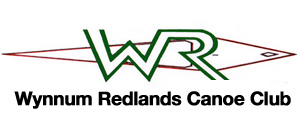Flat Water                      Long, flat stretches of water, can be tidal or not, eg Tingalpa Creek, Wivenhoe Dam with gravel races & faster moving water to Grade 1 level eg Upper Brisbane River in different sections.
                                          Hazards:  Wind, rain,  storms, wash from other water users, recreational fishing boats,  water skiers differing land and water levels due to tidal flows assistance or resistance from direction of tidal flow  dangerous riverbed &/or banks eg oyster beds.
                                          Critical knowledge:  (1) The larger the body of water the more susceptible it is to wind. (2) Wind can rise from a gentle breeze to severe in 10-15 minutes.   (3) Tidal flow is greatest in the middle 2 hours i.e. hours 3 & 4 of the flow in or out.  (4) will the tide take you into greater danger or greater safety (5) what is the tidal fall. eg in upper Tingalpa Creek the difference in height between high and low can be in excess of 1_ metres.
Estuary                            Where creeks, rivers open to protected coastal areas eg
                                          Hazards:  (refer to flat water hazards & critical knowledge):  wind, weather, tide, recreational fishing boats and large vessels, marine animals
                                          Critical knowledge:  in a passage eg Bribie passage or between mainland and
Sea/Ocean                      Open ocean or coastal areas unprotected by islands
                                          Critical knowledge: refer to flat water & estuary plus weather reports & forecasts position of reefs, sandbars, infamous tidal rips access to fresh water
Whitewater:                    (1) Where water is obviously turbulent, boisterous, foaming, violent eg beach surf
(2) in rivers where water is obviously turbulent, boisterous, foaming, violent due to constriction of the flow, obstruction by rocks and other debris or where there is a noticeable drop in the river line eg waterfall, weir, Athens whitewater Stadium.
Critical knowledge: Experience
BOAT TYPES:
Flat Water Boats:                TK1 & TK2Õs can be ruddered or unruddered, fibreglass, wood or plastic. General shape is broad, flatish bottoms, not great depth, 3-4 m in length (TK1). 
Most of the club fleet are Flat Water Boats.
Advantages:  light to lift & move  easy to keep on course designed for paddling in a relatively straight line for lengthy distances eg BV 100 without too much steering effort
Disadvantages:  is slow to turn can be capsized by boat wash, large swells, poor balance poor storage.   IS THE MOST UNSTABLE OF THE KAYAKS.
Estuary Boats:                     Usually fibreglass and ruddered eg Rosco Tidemarks. Not generally considered to be a marathon boat as much heavier than Flat Water Kayaks, so slower to paddle.  Suited to more challenging, mid-range coastal water, large open flat expenses where wind might rise eg
                                                Advantages:  very stable in flat water and good on
                                                Disadvantages:  heavier to lift, slower to paddle, slow to turn unresponsive in rolling swells.
Sea Kayaks:                          Usually ruddered can be fibreglass, plastic or wood.  usually have storage bulkheads for expedition paddling. Very stable in open ocean conditions. Designed to paddle long distances on the sea.  Club has one only Ð Osprey.
                                                Advantages:  Very stable in most water and weather conditions except white water.
                                                Disadvantages:  Heavy to carry and paddle slow to turn more tiring on flat water than the lighter TK1Õs.
White Water Kayaks:        Never ruddered usually plastic but can be fibreglass shorter and deeper than most kayaks eg blue & grey Dancer in club fleet. Extremely stable in wild water have smaller cockpit and can be difficult to get into.
                                                Advantages: difficult to capsize extremely easy to turn
                                                Disadvantages: difficult to paddle in straight line difficult to exit in a capsize.
General overall safety guidelines:
¯       always have drinking water
¯       always wear a hat in daylight
¯       always apply 30+ sunscreen
¯       wear a PFD.  If you have a PRD on, make sure it is done up FULLY.  If you do not wish to zip & buckle the PFD,  we recommend you DO NOT PUT IT ON AT ALL.  An improperly worn PFD is a hazard.
¯       paddle with partners, especially in new or more challenging conditions.  3 boats is good 4 is excellent.  In the event of an accident, 1 boat can stay with victim and 2 boats can go for assistance, which increases their safety chances.
¯       In the event of an accident or capsize do not become a victim yourself by undertaking activities beyond your own capabilities.
¯       Consider clothing needs for weather changes.
¯       Consider carrying minimal safety gear eg first aid kit, throw ropes & tow ropes.
¯       Always consider the tide.  If you capsize or become unable to paddle your boat, will the tide assist your safety or increase your hazard.  
¯       always pre-consider the best route to safety.
¯       never paddle alone in new or challenging conditions
¯       never paddle beyond your ability and experience unless you have guidance from paddlers who are experienced in the new environment.
WRCC safety guidelines:
v      wear a PFD if paddling on
v      always wear a safety helmet on white water
v      always wear a PFD on white water





